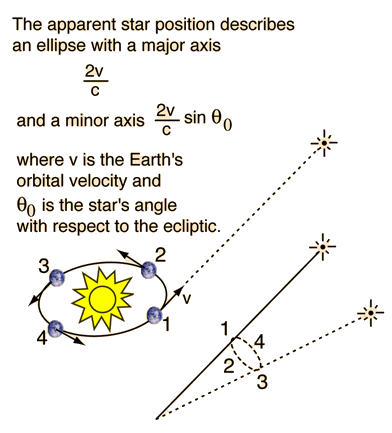Double Star Images
Suppose we take the common-sense position that if a star is moving toward us, then the light from that star must have a higher velocity toward us. Since light does not depend upon the medium (space) then the light speed surely must add to the velocity of the source? From this point of view, consider the observation of a binary star system.

As a youthful clerk in a Swiss patent office, Einstein may have had time to reflect upon the contradictions in star images that arise if the light velocity depends upon the velocity of the star toward us.
Relativity concepts
| HyperPhysics***** Relativity | R Nave |

